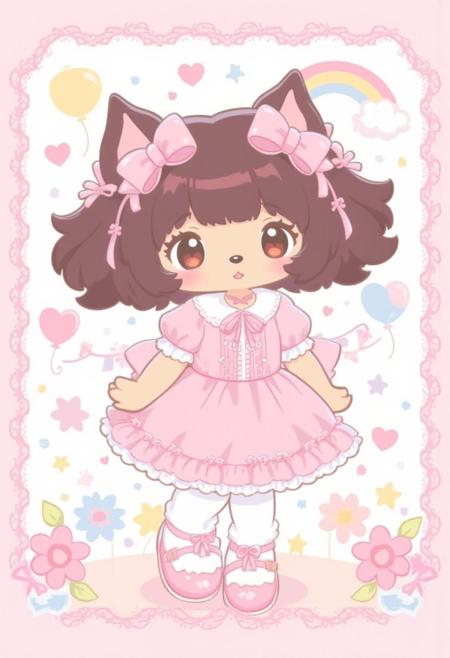Updated: Jun 19, 2025
clothingGenerates a flexible, general take on the Japanese fashion inspired by glam rock and punk, visual kei. You could probably get its subcultures with enough detailed clothing/makeup/hair prompting.
From Wikipedia:
"Sources have variously referred to visual kei as a movement, scene, subculture, and music genre. It is not associated with any one musical style, as visual kei artists play a variety of genres including punk rock, heavy metal, pop, electronica, classical, and industrial. Instead, it is defined by an act's emphasis on aesthetics, particularly their fashion and use of makeup, with a number of visual kei artists and critics describing it as a freedom of expression and experimental fashion. Koji Dejima of Bounce wrote that visual kei "revolves around the creation of a band's unique worldview and/or stylistic beauty through visual expressions in the form of makeup and fashion." Sources have also noted that visual kei is a "uniquely Japanese" phenomenon.
Visual kei musicians often have elaborate, dyed hair, extravagant costumes, frequently with leather, PVC or lace, or based on traditional Japanese clothing pieces, and excessive jewelry. Many musicians make use of androgynous and gender-bending aesthetics, with some of its male musicians cross-dressing in a manner similar to traditional Japanese onnagata performers. This rose to prominence through the success of Malice Mizer, whose guitarist Mana performed dressed as a woman and singer Gackt was a "living specimen of bishōnen." Such aesthetics are reminiscent of those seen in shōjo manga. Different artists have taken aesthetic influence from various fashion styles including glam, metalhead, punk, goth, and cyberpunk. Dejima generalized visual kei as being based on the androgynous sensibilities of the New Romantic movement and Los Angeles metal scene, or the goth subculture, and topped off with elements from "strange" and "taboo" interests such as Lolita, psychopathy, and the occult. Many subsects of visual kei exist to describe separate styles. Eroguro kei is one such subsect which is influenced by BDSM and horror imagery, while angura kei makes use of traditional Japanese clothing styles like kimonos. Many acts tone down their appearance upon achieving mainstream success, calling into question whether they are still to be considered visual kei.
In addition to the visual aspects, visual kei artists often have a wider "decorative fantasy" concept or context and their on-stage performances are "overwhelming, multisensory experiences whose constructed nature is made apparent to audiences" (e.g. observed in Gackt's career claim about being a vampire)."

